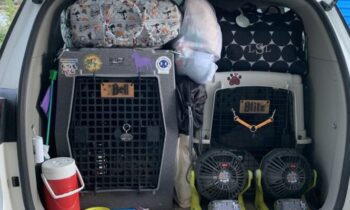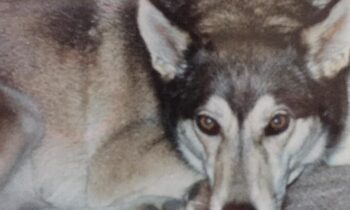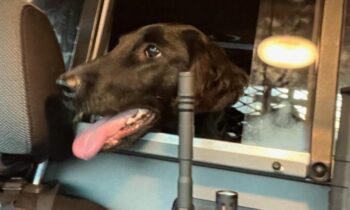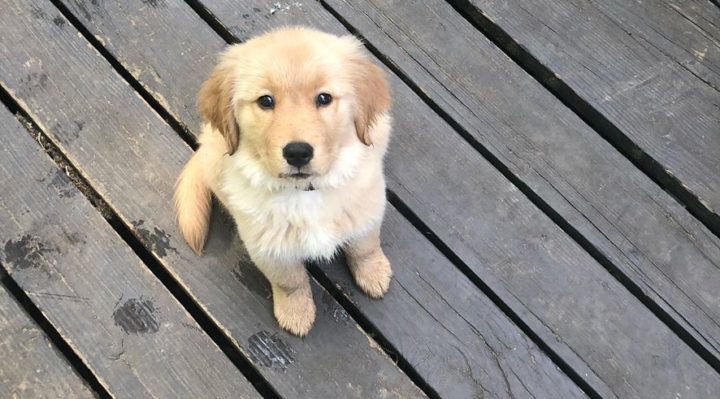
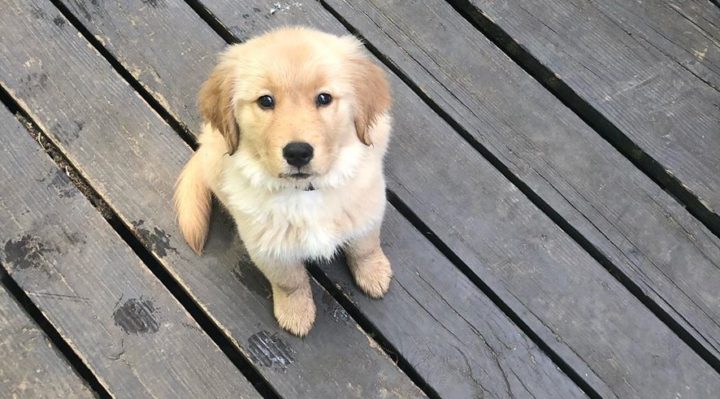

Maybe long before the pandemic, you’d planned to add a puppy to your family this spring. Maybe when you learned you’d be home for at least a month, you made a spontaneous decision to adopt or to foster a pup to raise while you and your family had the time and, you hoped, energy for the job.
The new member of your family may be the first puppy you’ve ever raised on your own, or one of a long line of young canines who’ve joined your household over the years. Whether you’re an experienced puppy raiser or a first-timer in early doghood education, one thing is certain: you’ve never raised a puppy in a coronavirus pandemic before right now—nobody has!
I asked dog owners and dog professionals for their suggestions on raising a puppy during the pandemic, when in-person puppy classes have all been cancelled, and social distancing can make meeting new people and going new places much more difficult than it is during “normal” days.
Rebekah Piedad (California) Now is a wonderful time to raise a puppy! All the exposure and far less of the flooding, thanks to social-distancing rules. I’m a huge fan of tailgate parties with young puppies. Take your puppy to a parking lot at a shopping center or near an area where people walk their dogs, and hang out in the car with your puppy with the tailgate down (or the side door open if you don’t have a tailgate). Play something akin to “I Spy.” Every time your dog sees another dog, a person, a shopping cart moving, a loud motorcycle, or anything else that gets the puppy’s attention, pop a treat into the puppy’s mouth. This way, they learn that cars are fun, and all the things in the world are not only normal but also opportunities for good things to come from their owner! It makes it nice and polite to say, “Please don’t approach. We are practicing social distancing!” And as the passersby pause, you can thank them for helping you socialize your dog from that healthy distance. If they continue to approach, you can simply close the car door. A face mask would also make an appropriate deterrent.
Winkie Spiers (United Kingdom) Make the puppy feel safe and loved, and let them get enough sleep and companionship. Walk slowly, let them sniff, and if you use a long two- to three-meter [6½ to 10 feet) lead, then they can get close to or meet other dogs with the humans keeping a good distance. Dogs communicate through body language and smell, so do plenty of slow walking and sniffing, allowing your puppy to observe other dogs if meeting is not possible. Teaching a pup to be alone can start when they are older, more confident, and used to their new home.
Sue Penn (Virginia) Start preparing them for being alone . . . baby steps. By closing doors as you leave a room for a couple of minutes. By putting them in their crate with a safe chewy, as you spend time in another room. Going through all of the pre-leaving preparations and leaving for a few minutes with a goodbye. Entering the house calmly. Slowly extending the amount of time, once puppy is comfortable with previous alone time. Another couple of things to do are getting the pup out in the car and taking car rides. If there are any fear-related issues, start working on helping the puppy to enjoy car rides (versus fearing them). Puppyhood is also a great time to get them used to handling and to some of the things that a veterinarian would do during a typical exam. Nail trims are yet another thing to get them used to. Just a few minutes a day on all these different things is all it takes. It won’t take long to have the puppy conditioned properly.
Debbie Martin (Texas) Create a routine of interactions you can continue when schedules return to normal. Use different lotions and shampoos to make you smell different. Set up a room that changes every few days—different smells, sounds, surfaces, and items. Always work at your puppy’s pace (let them explore at their own pace) and make sure they are having fun and getting lots of treats.
April Shoe (Alabama) I am hosting classes online, and utilizing daycare for my puppy, since our facility is still open at this time. We go on car rides through drive-throughs and the neighborhood, and, since we have had two rounds of vax, we do walks now. We also have dogs on both sides of our back-yard fencing so my puppy is exposed to other dogs in proximity that we can make good associations with.
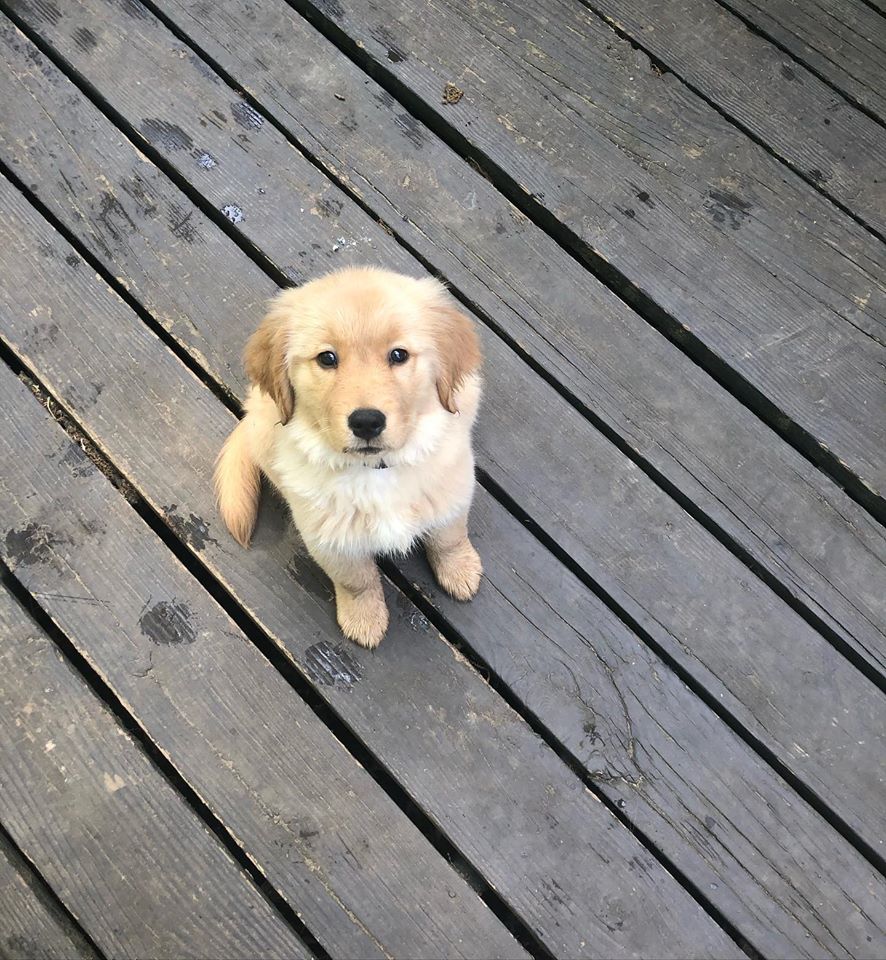

Photo by April Shoe
Even experienced trainers and puppy raisers can find this time of social isolation frightening when something goes wrong. Terry’s puppy did something fairly normal for a young Labrador: he ingested something he shouldn’t have. When she saw symptoms, Terry knew exactly what to do.
Terry Hill Cunningham (West Virginia) We are working on swimming and delivering ball to hand, plus the basics: sit, stay, down, leave it, and come, with plenty of outdoor enrichment. Recently, Bailey had to be in the hospital for 48 hours. He jumped in the dryer and ate dryer sheets. He was throwing up, with diarrhea. He also felt hot. We took him to urgent care. We called reception and a tech with mask and gloves removed his collar and took him inside. Twenty minutes later, the vet phoned with X-ray and blood work results. Temperature was 103. She sent the X-ray to a radiologist. He said the joint in question looked normal. With the fever and Bailey’s being a big boy, they were concerned about Hypertrophic osteodystrophy (HOD). The vet called three times a day with updates. When we picked Bailey up to take him home, the tech delivered to him to the car with written discharge instructions and went over them with us from six feet away. Even vets working in other parts of the clinic have to stay in their own section.
Don’t waste this precious time with your new family member, even though you don’t have the formal structure of in-person puppy classes to attend or a trainer coming to your home to work with you!
Mark Steward (Washington) Best advice: know it’s going to get easier if you invest your time in the first year. Pour yourself into the constant training when they are young. They are learning every minute of every day. Ask yourself, “What am I teaching right now? What is he/she learning?” Also, use the crate! You’re not being cruel! Use it!
Kat Camplin (California) Leave your puppy alone for periods of time. Take a quick human-only walk, put them in a separate room, or put them in an exercise pen away from humans.
Maria Burton (Washington) Yes! Puppies need to know it’s not normal for humans to be home 24/7 with them. Strange times!
George Guba (Virginia) Try to keep a schedule with the puppy that represents your regular schedule. This helps prevent behavioral problems when things go back to normal. (I hope this does not become “the new normal.”)
Jorge Melara (Wisconsin) Practicing duration in the crate when we are home as well as alone. Lots of handling!!
Sara Maynard (Trinidad and Tobago) I am fostering a puppy at the moment. She has lots of freedom on my secure porch, but I sit with her at set times during the day. Toys are a must. Chewing . . . well, it happens. At night she has a routine: she plays for a bit after dinner, then goes into her puppy pen to sleep with her toys. She has a little moan for a minute or two, but then settles.
Carmen LeBlanc (Oregon) Resource-guarding prevention exercises, handling-sensitivity prevention/desensitization, crate/confinement games, and training. So much to cover in puppyhood!
Jules Weber (Maryland) Training sounds and surfaces. That’s pretty easy to do at home. Start small, like dropping one spoon two inches. Click and treat. Gradually work up to more sounds. Same for surfaces. Obviously there’s probably carpet, but you can put jackets on the floor, a crate divider, the underside of the bath mat, etc. Reward for paws touching. Bonus points if the pup can do a reliably known behavior on that surface, like sit.
Trish Ryan (New Jersey) Expose them positively to lots of sounds using your cell phone: horn, doorbells, thunder, fireworks, trucks, braking, oven timer beeping, laughing, crying, kids playing, etc. Leave the vacuum and the hairdryer out.
Jay Andors (New York) Introduce them to different substrates. Bubble-wrap an exercise pen laid out flat on the ground. Lay out a simple obstacle course. Shape them to love being handled, brushed, teeth brushed, and nails clipped. Go slowly. Be aware of the different fear periods that start to emerge.
Have You Brushed Your Dog’s Teeth Today?
http://www.clickertraining.com/node/4743
Vicki Aquino Ronchette (California) Show Dog Prep School has free Shelter in Place puppy classes on our Facebook page.
Show Dog Prep School
www.facebook.com/showdogprepschool
Carrie-Anne Selwyn (United Kingdom) Canine Hoopers World podcast Episode 31 is all about socializing a puppy during social distancing.
Canine Hoopers World
https://anchor.fm/caninehoopersworld
Amy Shojai (Texas) Arden Moore has a brand new title written for kids (parents would love it, too) and it has terrific insight and tips for puppies to adult dogs. Plus, it’s great to get the kids involved.
A Kid’s Guide to Dogs
https://www.storey.com/books/a-kids-guide-to-dogs/
Now is a great time to do your due-diligence on puppy classes and in-home training in your area. I expect most experienced and ethical positive dog trainers and class instructors will be working on classes and one-on-one training that will help you and your new puppy make up for any learning opportunities that have been lost due to the pandemic. Pick the place you feel will offer you the best and, if possible, get signed up now for classes or private training that will happen when we return to normal.

